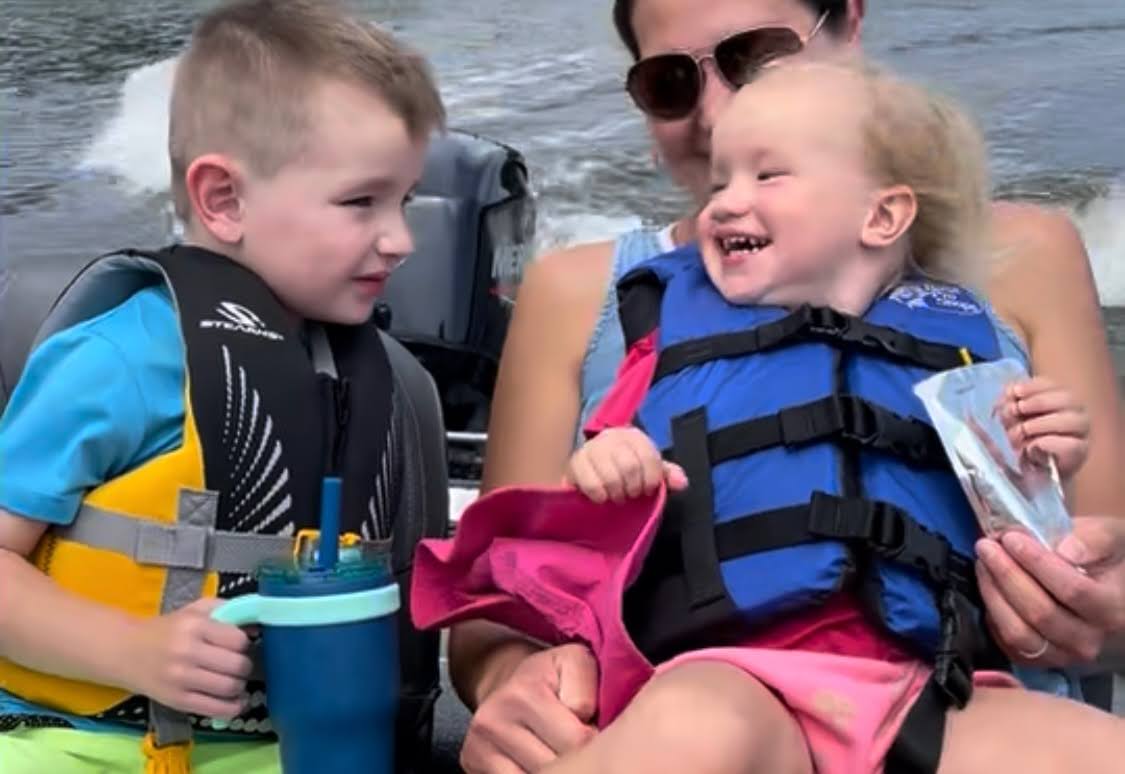Fishing and Boating: Fun On The Water, But Let’s Be Safe Out There by Dan Florent
It’s a beautiful day and your family decides to take the boat out for some summer fun and perhaps a little fishing. It’s something that I regularly do. I tend to take my senior First Mate, Charlie the Vizsla, along for company. I’m a good dog dad. I ensure that Charlie is wearing his life jacket, as I am. He’s my good luck charm. I swear he can detect where the bass are hiding. My wife will usually join us. She is geared up, as well. When pets, children and adults are on my boat, I am very cognizant of the dangers of drowning.
The CDC reports that drowning is the leading cause of death for children 1 to 4 years old. Swimming lessons and subsequent proper supervision are essential for the little ones. Knowing the dangers, I keep a supply of various sized life jackets available. They are properly fitted to each passenger before the boat is even turned on.
After boarding, be sure to relate a few points about boat safety and the location of any lifesaving equipment if needed, such as a first aid kit or a floating throw cushion. Explain what needs to be done if this cushion needs to be deployed. It also can’t hurt to ask if anyone has had CPR training. Does everyone know how to swim? My boat has a reboarding ladder that can be deployed. In the event of falling overboard, it enables a passenger to climb back in. I’ll also point that out. Sure, it sounds like a buzzkill, but so what? Soon you will be on your way cruising across the waters of the lake.
Fishing is a fairly safe and fun sport, although injuries can indeed occur. Of course, falling overboard is a serious event, but proper aforementioned preparation is important and can help minimize risk. Those of us that have been fishing for eons have had several incidents involving fishing hook penetration. They are painful and can be a serious injury. Fishing hooks are designed to catch and hold fish. They are very sharp and are usually barbed. The shape of the hook makes it difficult to remove if embedded deeply. Removing it can cause further damage. If a deep penetration indeed occurs, it is best to leave the hook embedded and seek medical aid immediately. If you can, find a similar hook to show to first responders to view its accurate contours to possibly make removal easier. One way to help prevent eye penetration by hooks is to outfit children with a cool set of protective glasses while fishing lines are being brought in and out. If they chafe at wearing the glasses, consider glasses specifically made for fishing. They are fairly inexpensive and tinted with blue lenses. These tend to allow better vision into the water. The kids can spot fish and other wonders of nature below the surface.
So perhaps you just want to take the boat out and not do any fishing? The general sport of boating is a fun and family friendly way of enjoying the water. There are the usual boating dangers that we are all aware of. Dangers such as erratic operation, overuse of alcohol, inattentiveness, unqualified operators, underwater objects and speeding are the usual issues. What is rarely discussed is the danger of Carbon Monoxide poisoning.
Carbon monoxide (CO) poisoning is one of the top 5 known causes of death among boaters. This appears to be most prevalent on houseboats, but this silent killer can also invade recreational boating. How can you spot the signs? Symptoms such as headache, dizziness, weakness, vomiting, confusion and even loss of consciousness and death can occur. CO has no odor and can result from gasoline powered boat motors. These motors require proper ventilation or a properly routed rear exhaust system. It kills by preventing oxygen from reaching the body’s organs which starves the brain and heart.
In June of 2020, a 9-year-old Oklahoma boy, Andy Free, died of carbon monoxide while out for a day on the water with his family. The family had extensive boating experience, but were not aware of the silent killer of open-air CO poisoning. In this tragic incident, the family had been out on the water for about six hours and the kids had been wakeboarding and tubing. When the boat docked at the end of the day, Andy was curled up in the rear area. When the boat rocked, he rolled off the side and into the water. When he didn’t immediately surface, two people dove in and pulled him out, but he was already gone. A CO test later revealed Andy’s levels at 72 percent. A level of 30 percent is considered fatal. Andy’s mom has made it her mission to share this heartbreaking experience to increase awareness of the dangers of CO poisoning. As a result, Oklahoma has enacted “Andy’s Law” which requires a CO warning sticker on motorized boats operating in Oklahoma waters.
In 2018, in my home state of New Hampshire, The NH Marine Patrol responded to a reported call of an unresponsive 8-month-old infant child on a boat. The family performed CPR in which the child became responsive and began to cry. At the dock, the boat was checked further and a 2-year-old child was discovered crying inside the forward berth area. The cause is believed to have been from CO poisoning. In this case, thankfully, both children were transported, treated and released.
Examine your boat by looking at your exhaust area and ensure there is no blockage. This mainly applies to those boats which contain a transom exhaust, but outboard motors also emit CO. Proper maintenance is essential in all cases.
Be cognizant of another boat’s exhaust emissions when meeting friends out on the water.
Never sit on the back deck or the swim platform while the engine is running. Most importantly, NEVER swim below the rear platform where the exhaust exits. It only takes one or two breaths to be fatal.
Tubing or water-skiing within 20 feet of a moving boat can be fatal. It is similar to trying to jog directly behind a slowly moving car and being encased in its exhaust plume.
If you suspect that a passenger may have been exposed to CO, you will need to take immediate action:
1. Get the passenger into fresh air.
2. Turn off the motor if it is still running.
3. Call 911.
4. Perform CPR if needed.
Owning and operating a boat is a tremendous responsibility. YOU are sometimes the captain and are responsible for the safety of all of your passengers. It is also a fun way to enjoy the lake with the family, water ski, catch a few bass and relax. Be aware of the possible dangers and minimize risks. The key to boating safety is preparedness.
Now, grab your tackle box and get out and have fun….and don’t forget the sunscreen! ❦
USCG, Recreational Boating Statistics, 2017.
Abcnews.go.com, My Son Died from Open-Air Carbon Monoxide Poisoning, 2020
Nhsp.dos.nh.gov, Boating Accident/CO Poisoning, 2018.
Boat-ed.com, Preventing CO Poisoning While Boating, 2025.
 About the Author
About the Author
Daniel Florent is currently a Division Chief at Kiernan Group Holdings and has specialized in training worldwide organizations and educational institutions in Active Threat Mitigation, Workplace Violence Prevention, and the consequent execution of tabletop exercises. Active in boating and bass fishing, he is also a research writer and author of numerous classified intelligence pieces.
Dan served 33 years in local and federal law enforcement and continues to strongly support New Hampshire’s police community. He spends a great deal of time with his boat buddy, Charlie the Vizsla.
Dan holds a Master’s Degree from the United States Naval Postgraduate School and is a member and executive officer of numerous public safety benevolent organizations.
